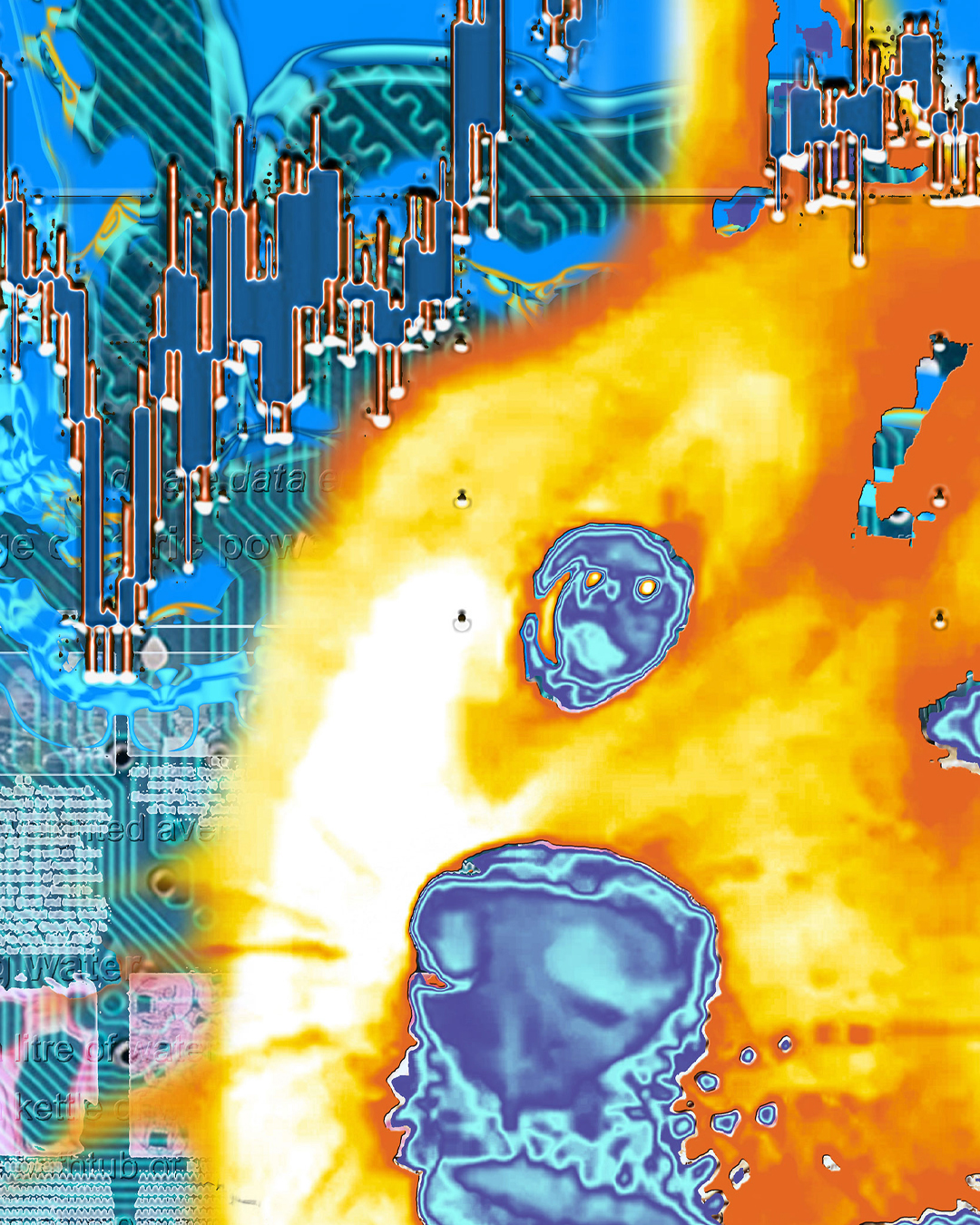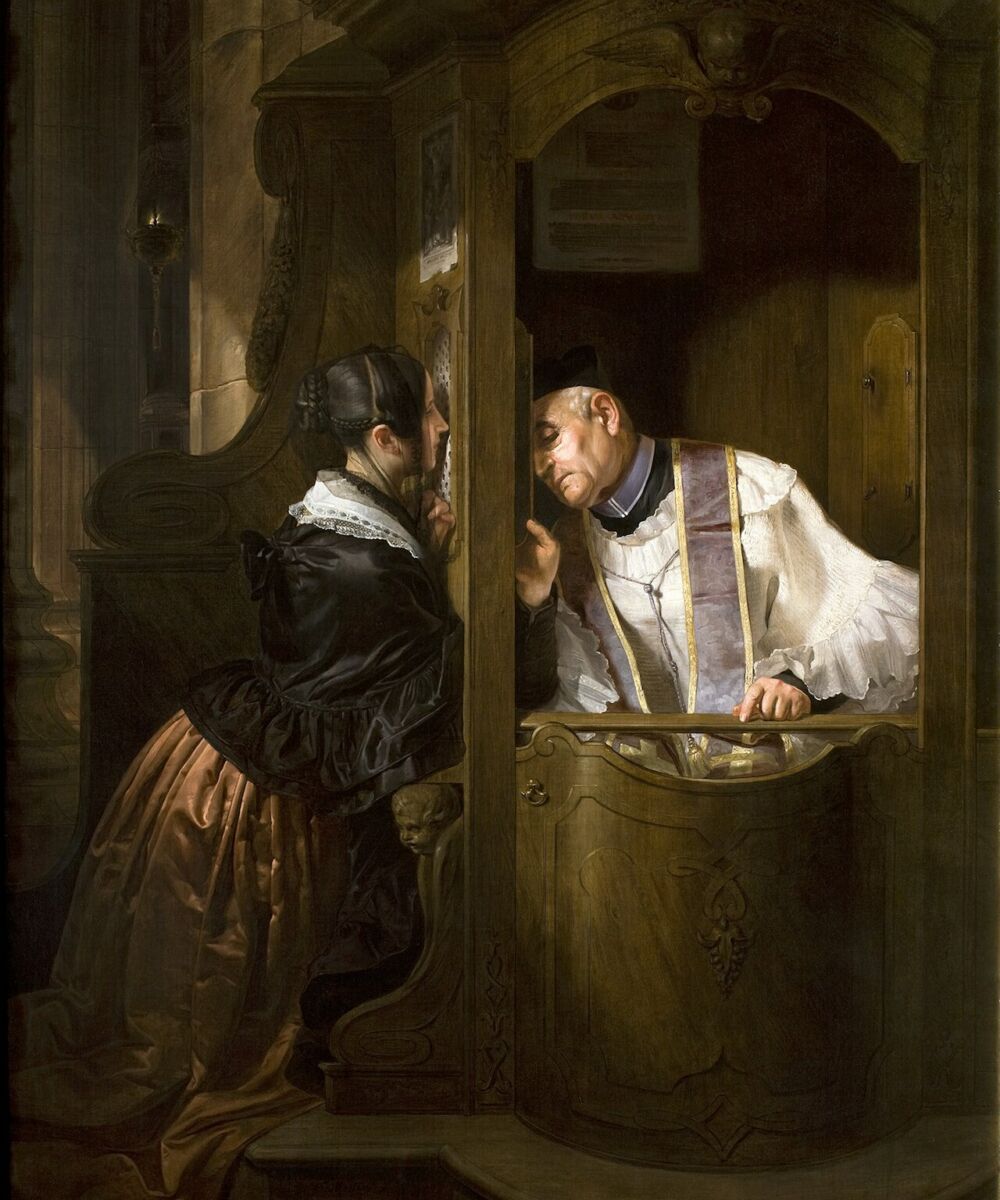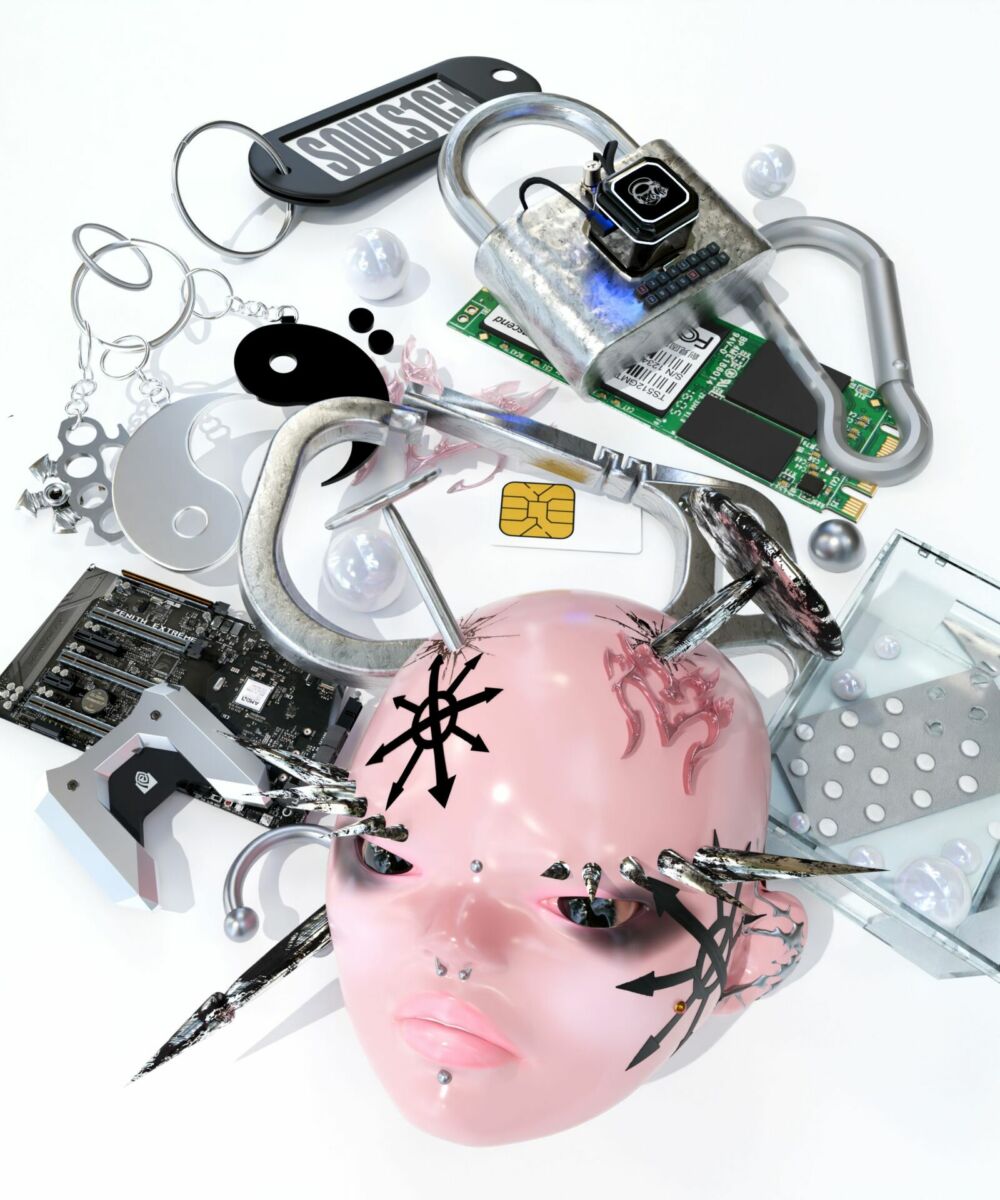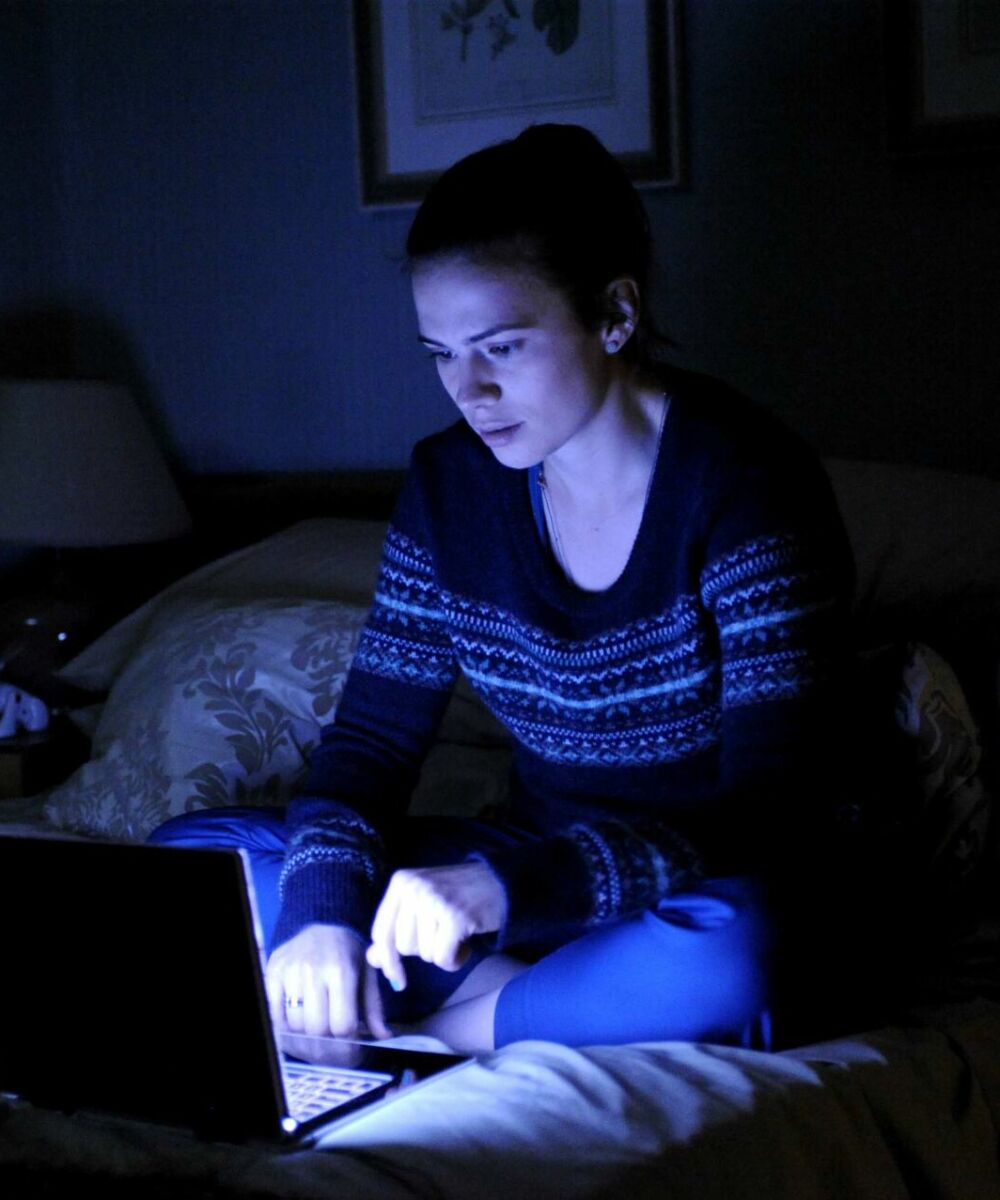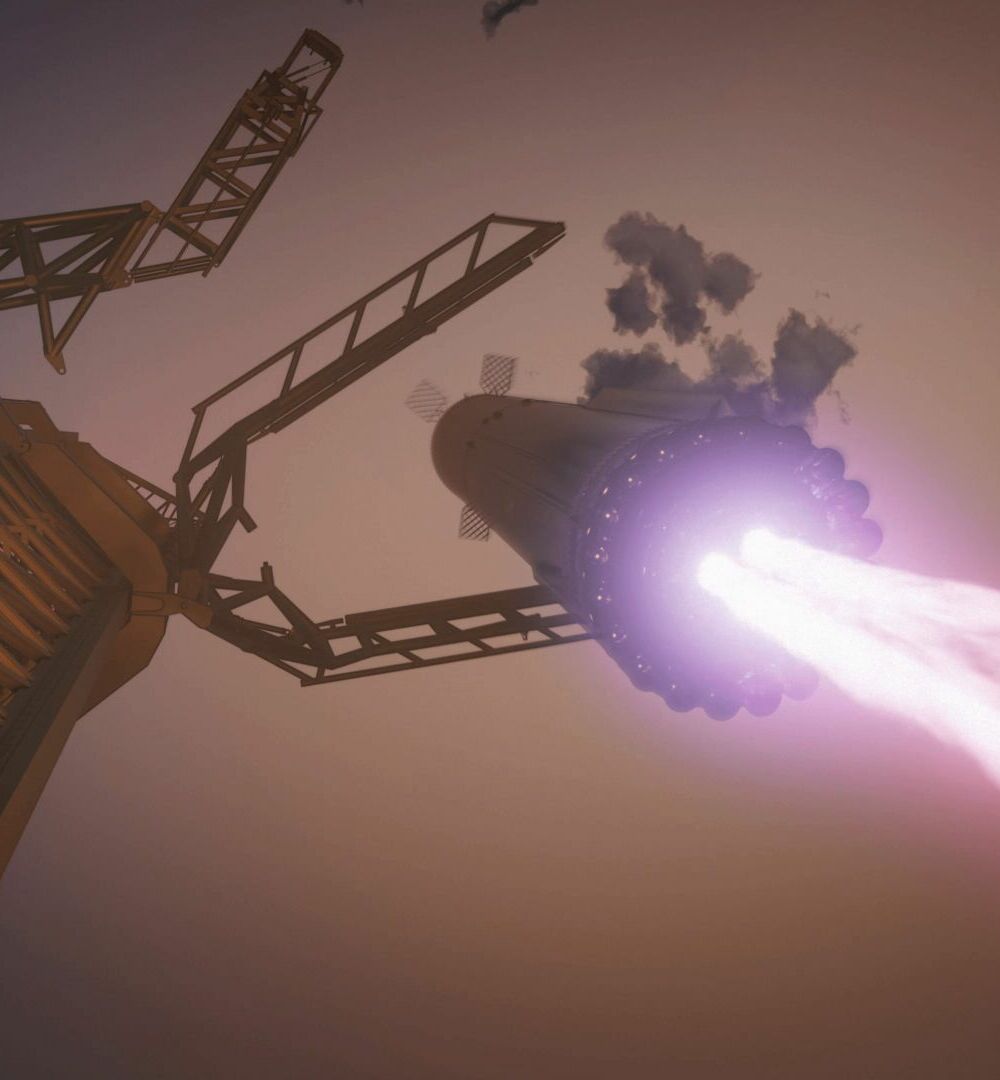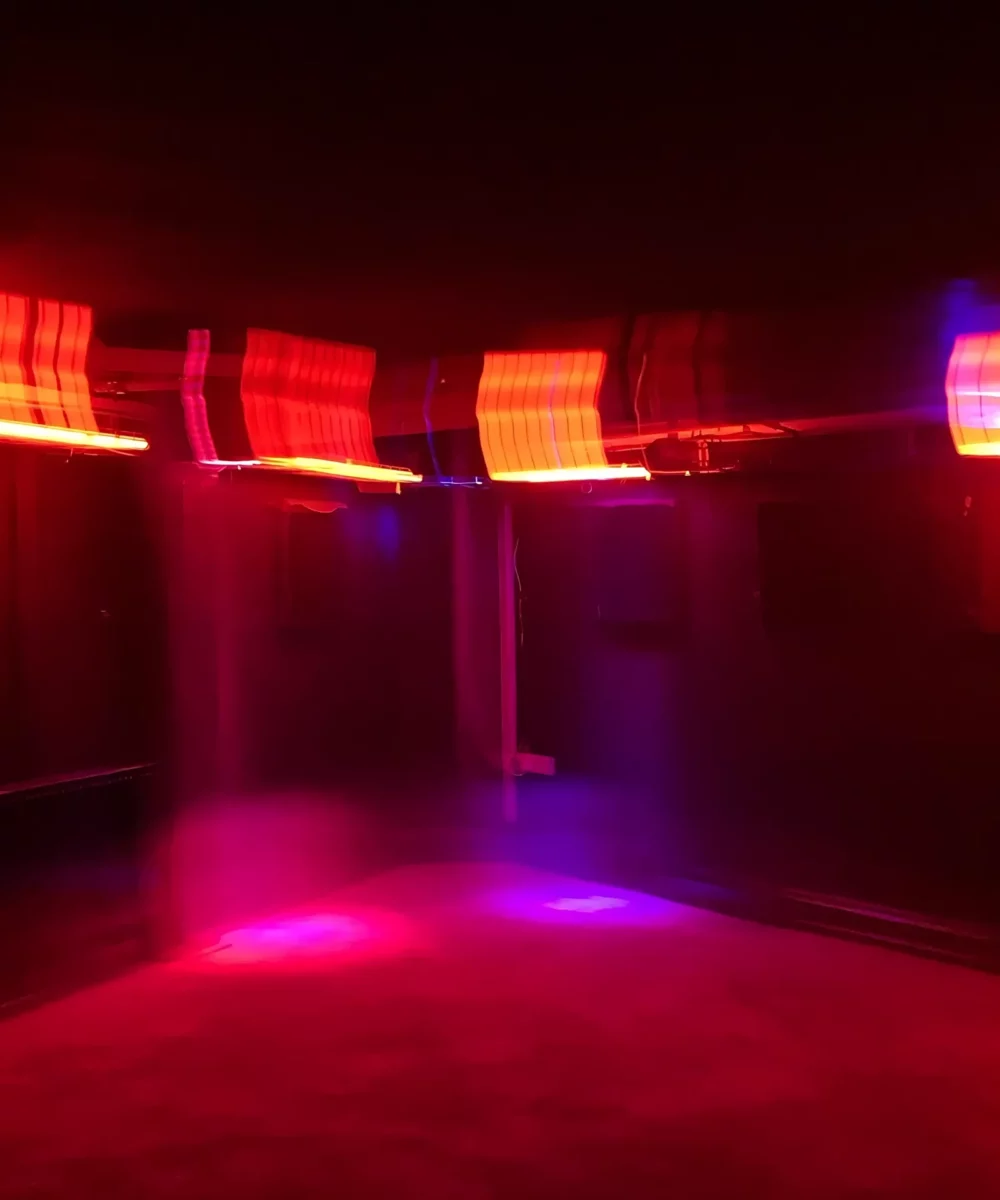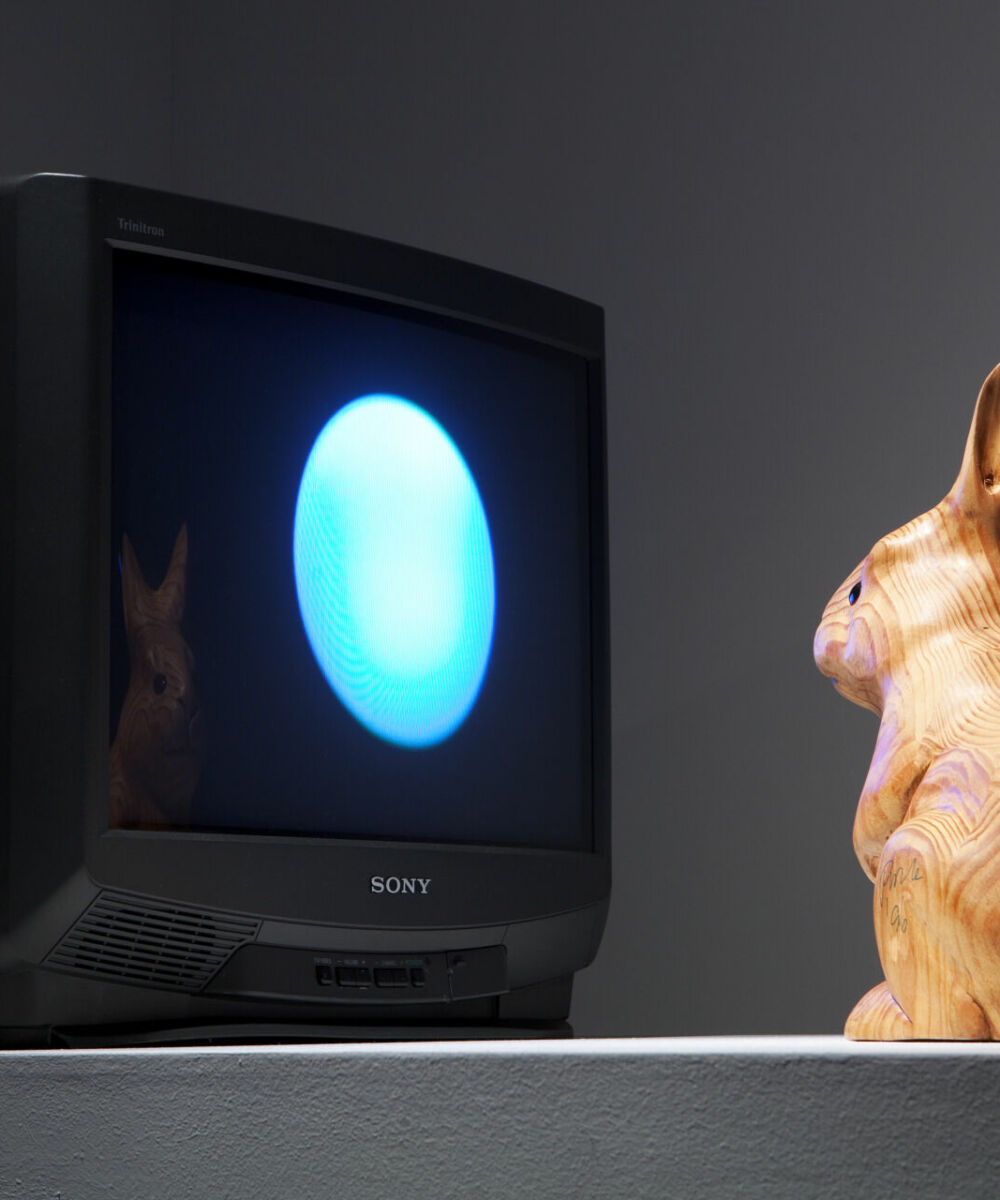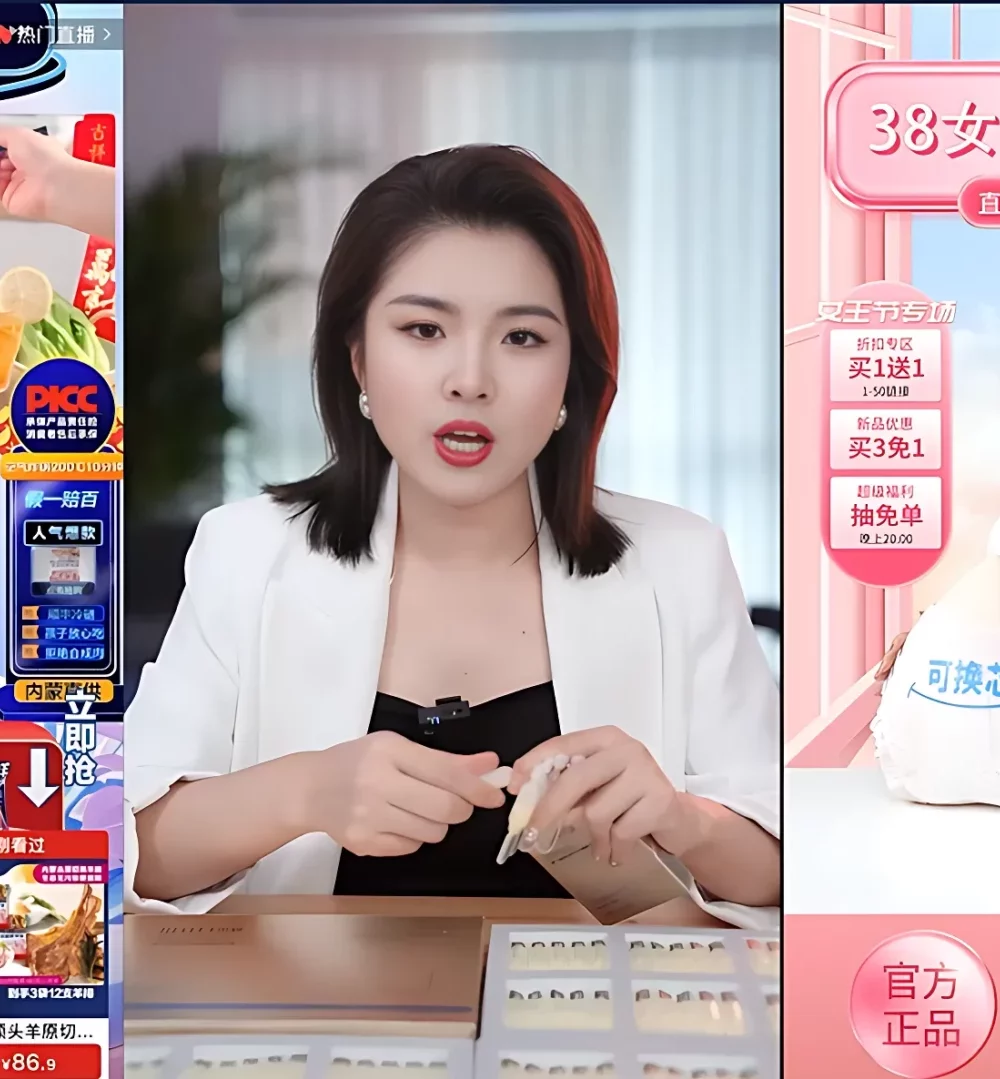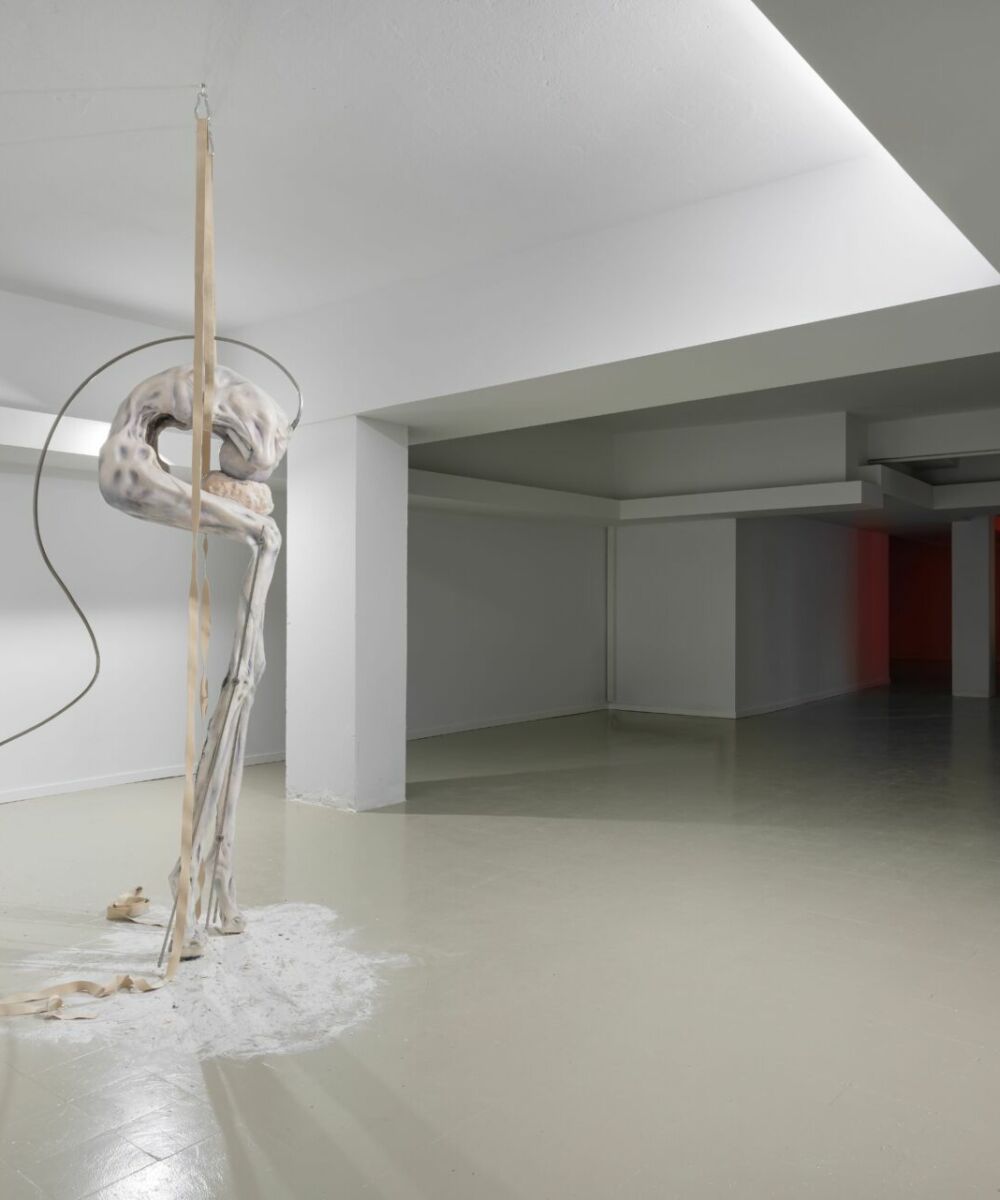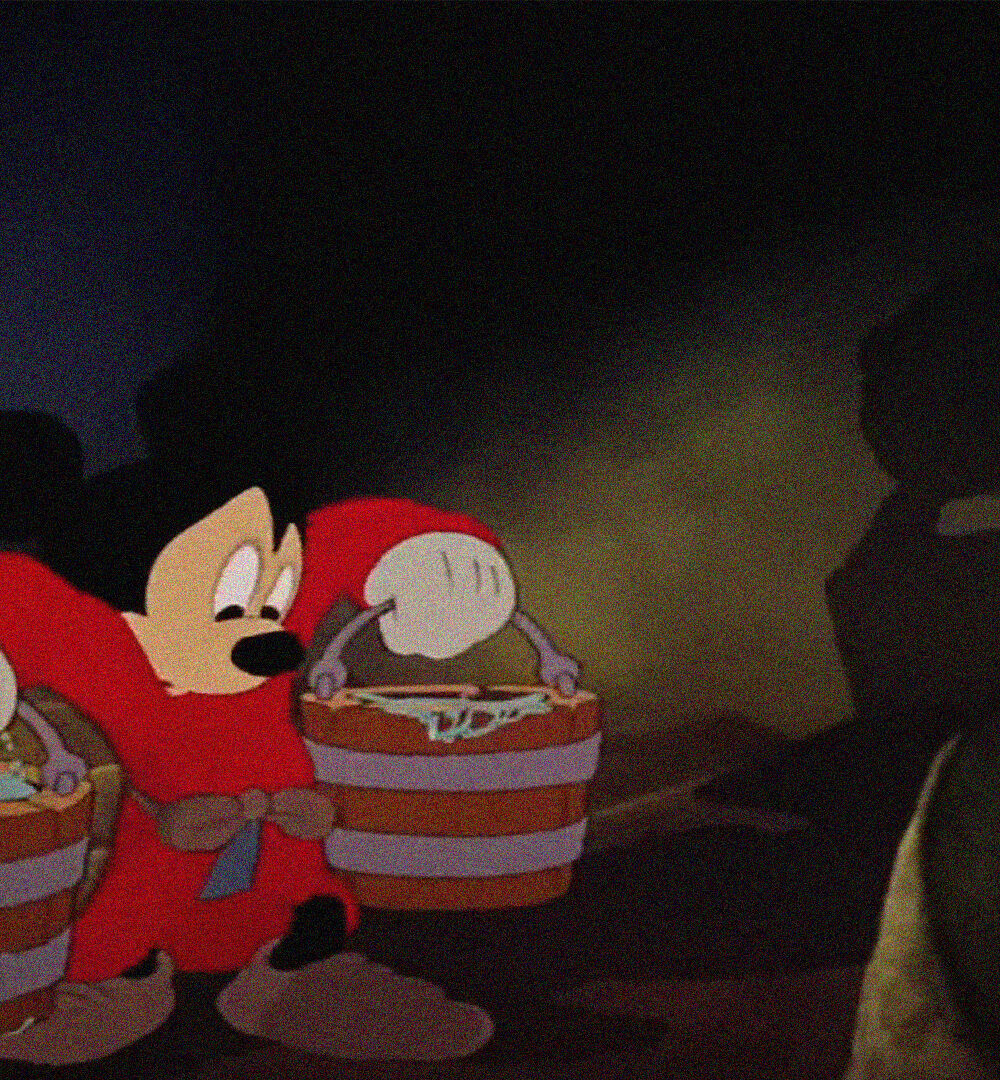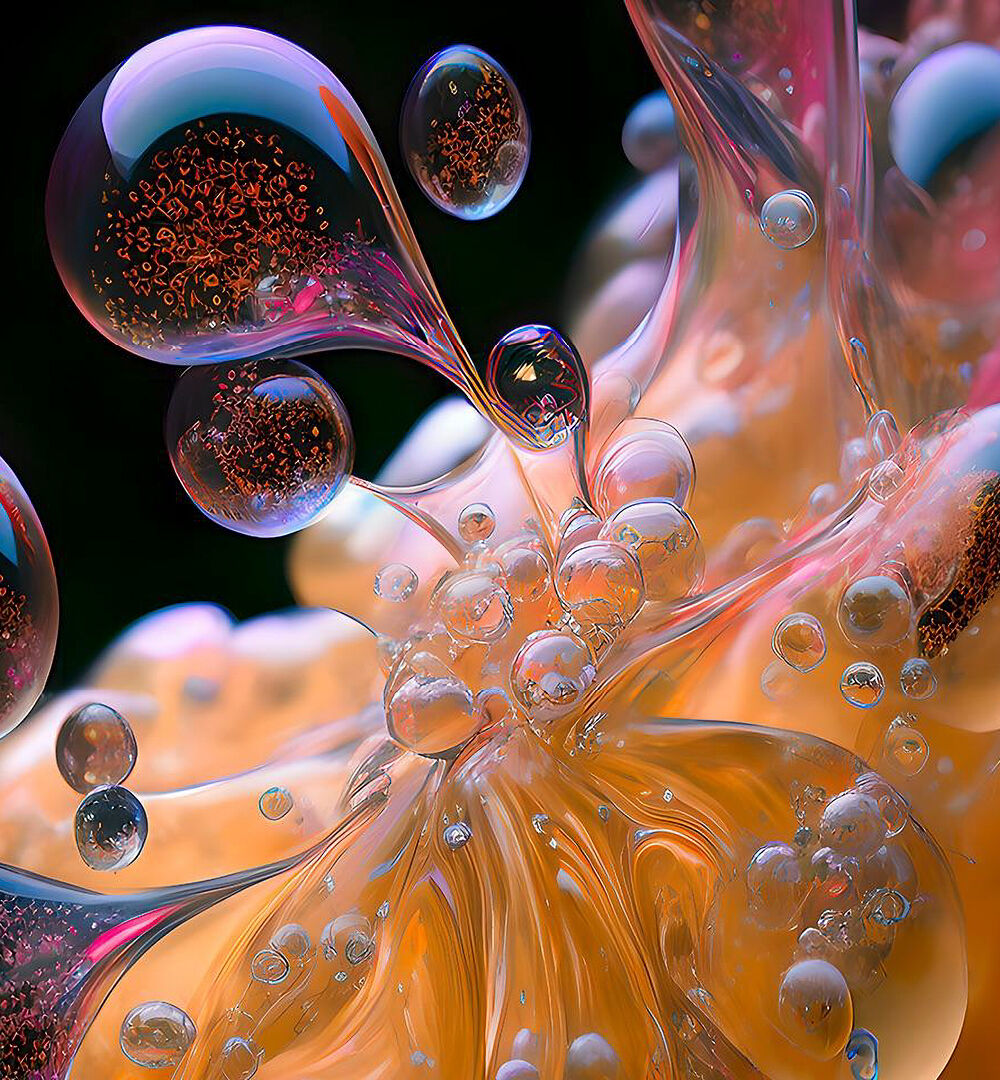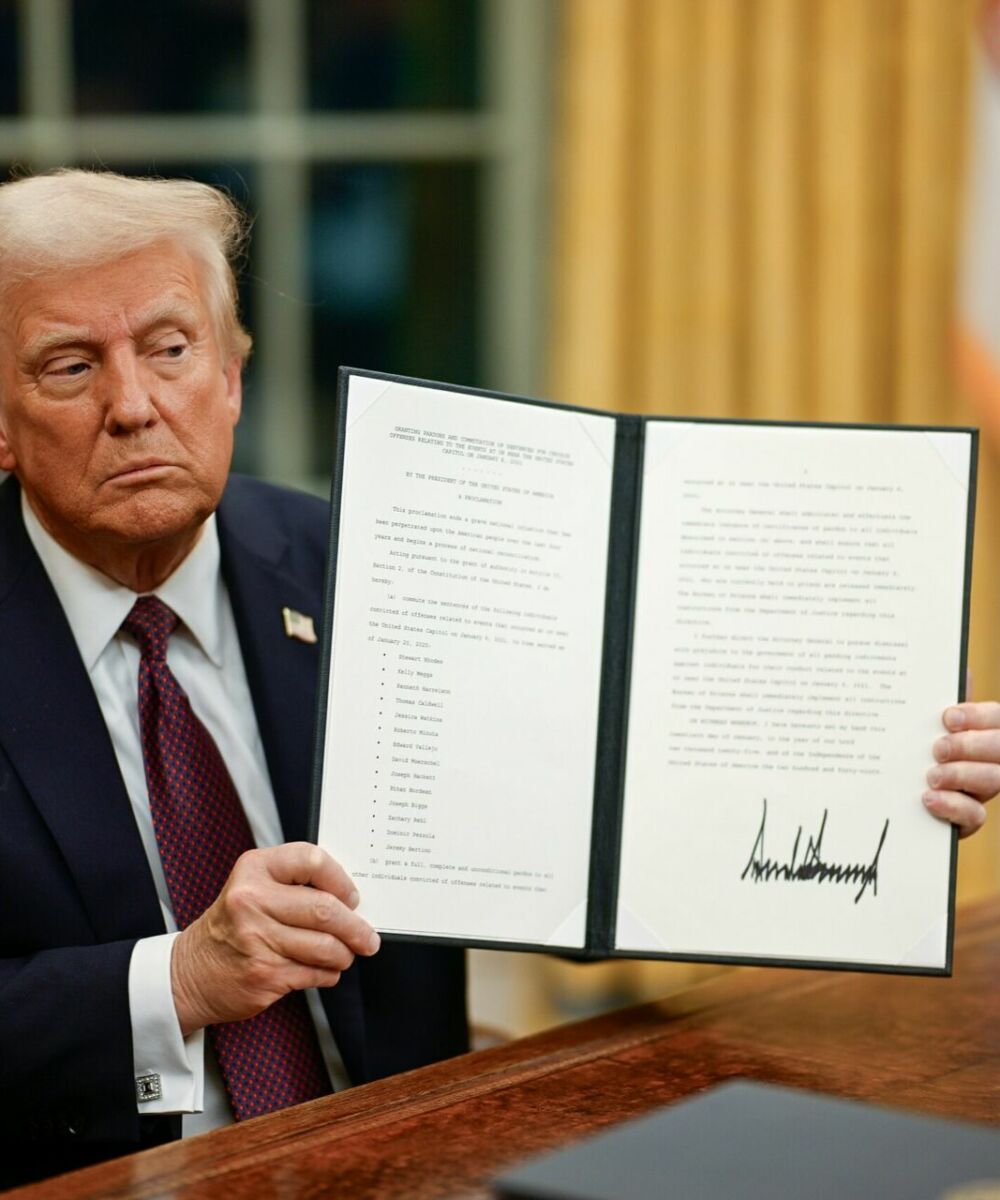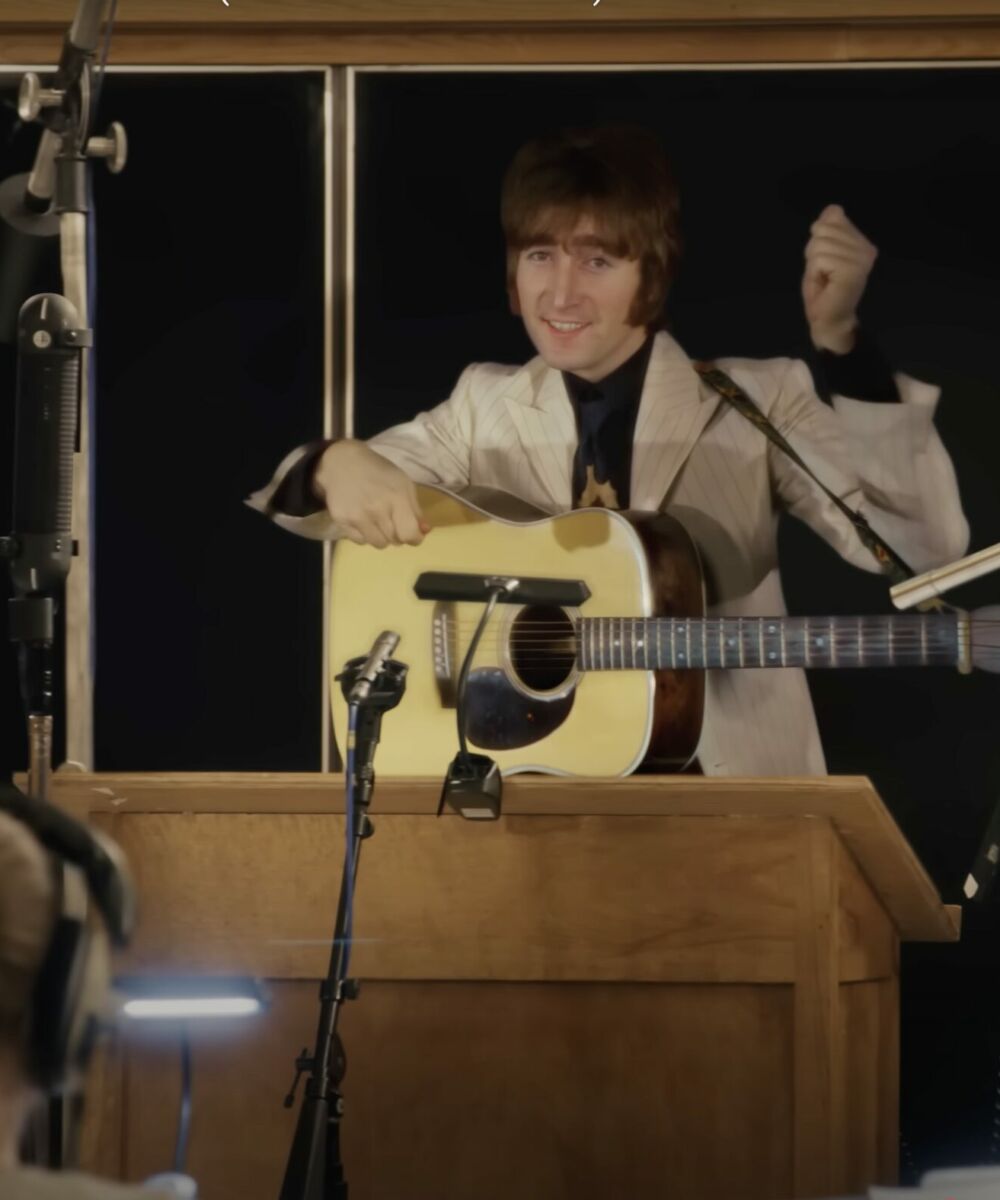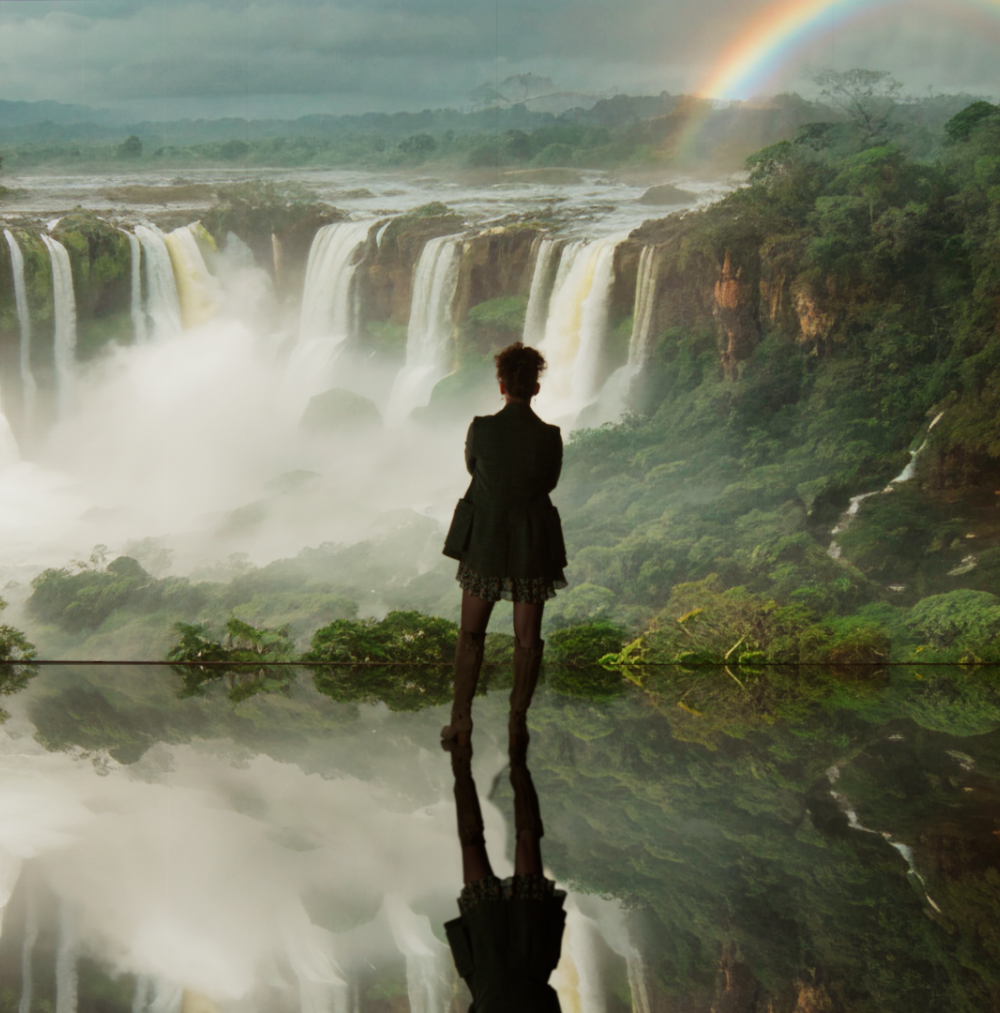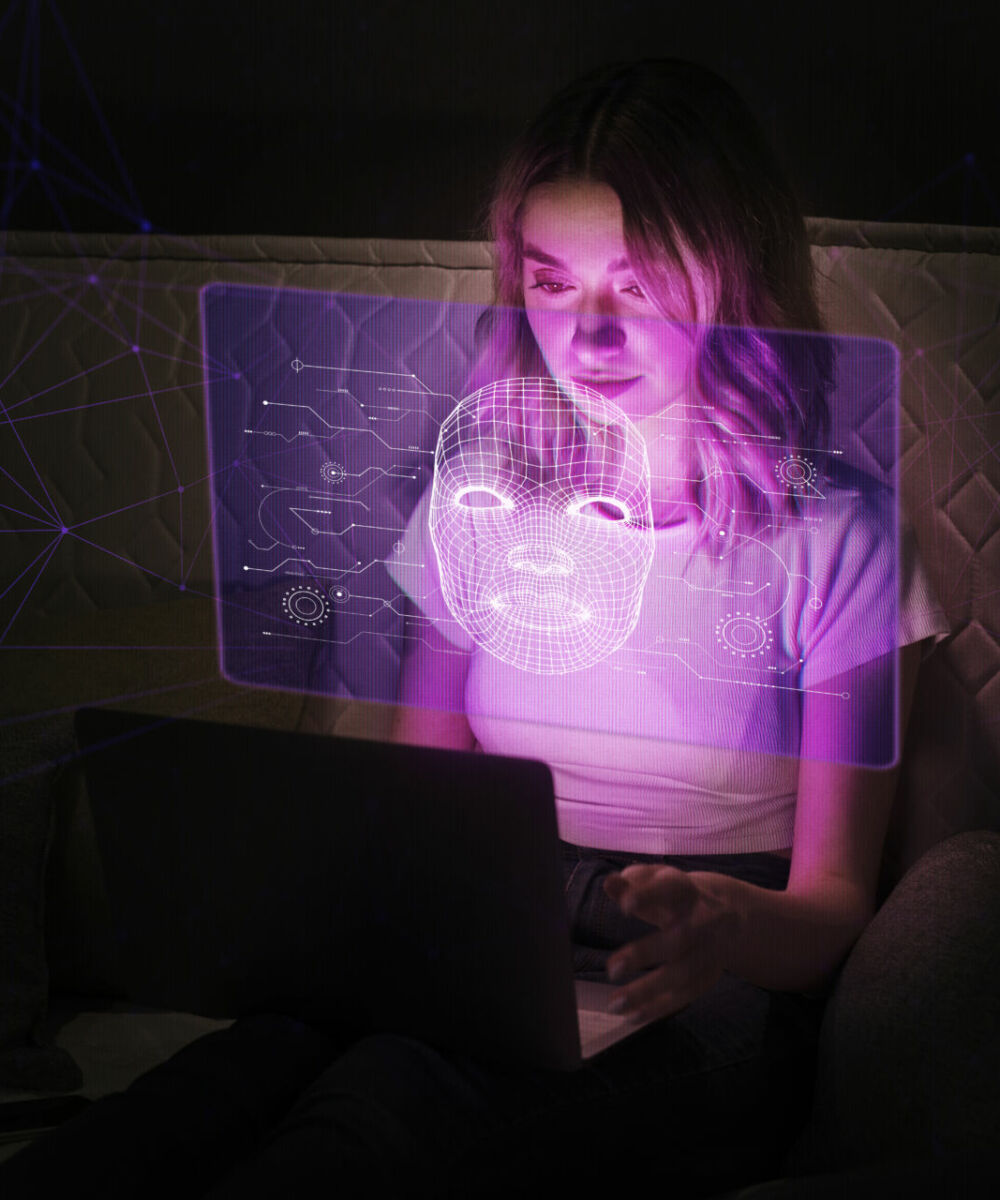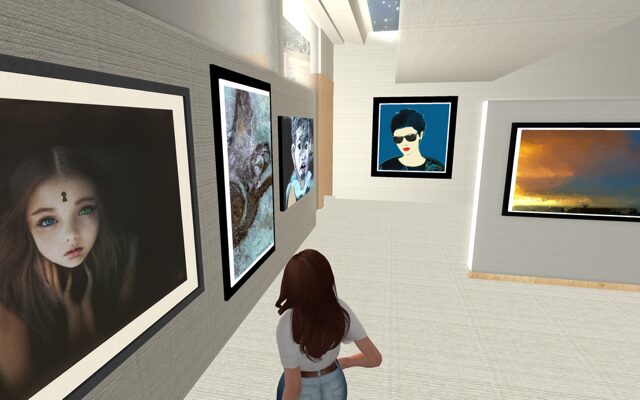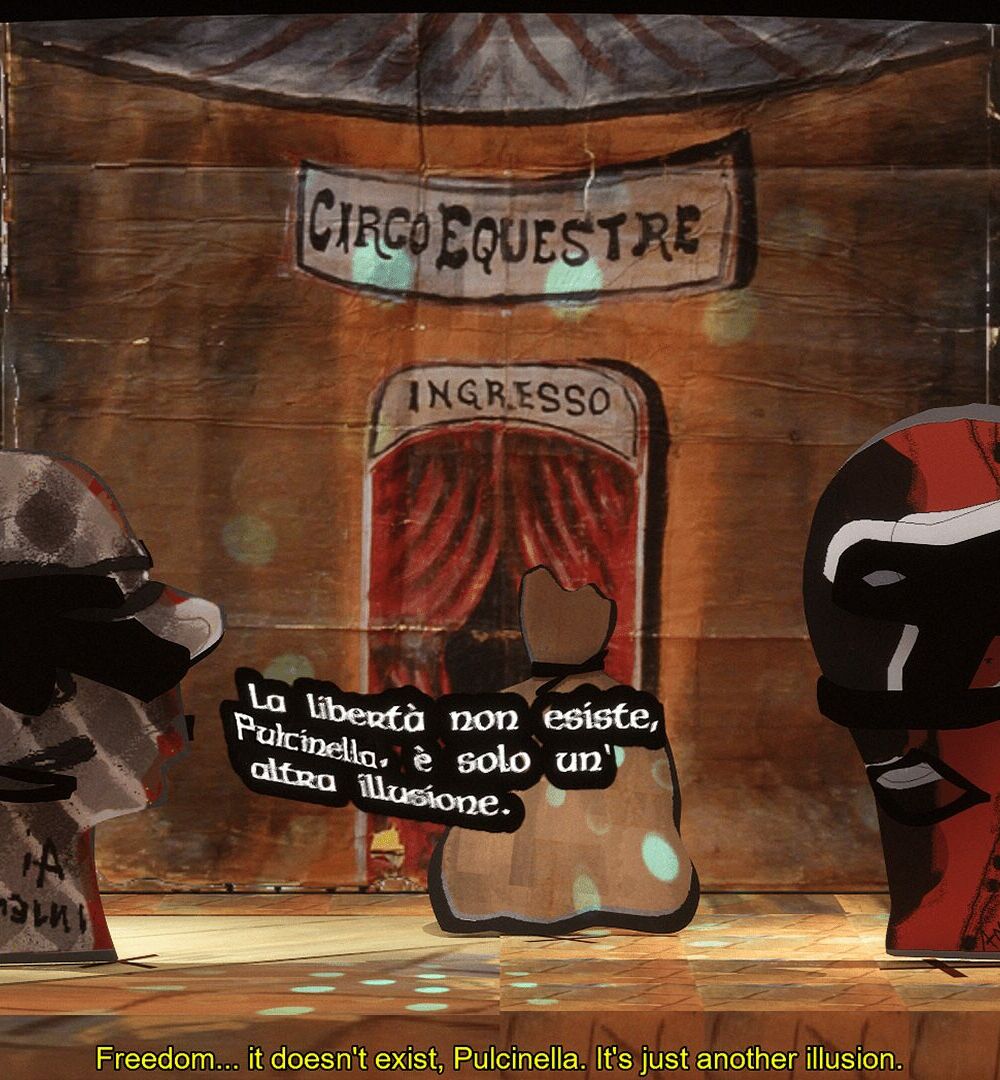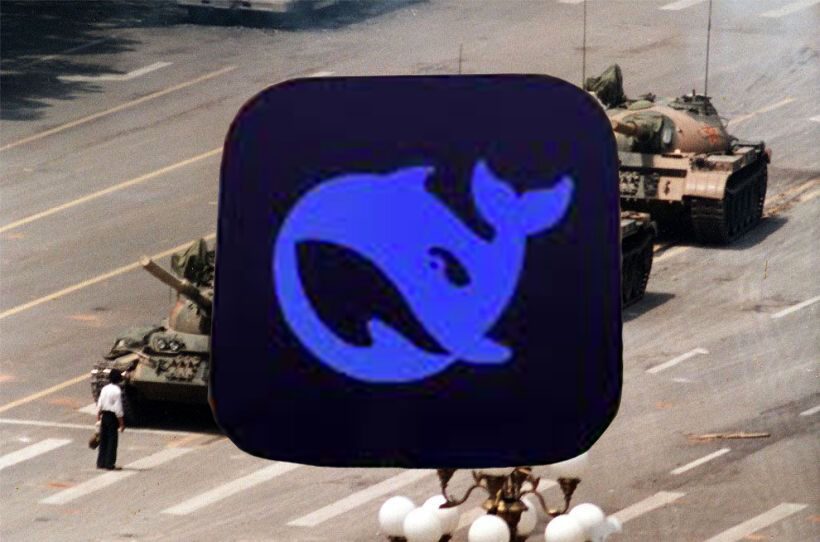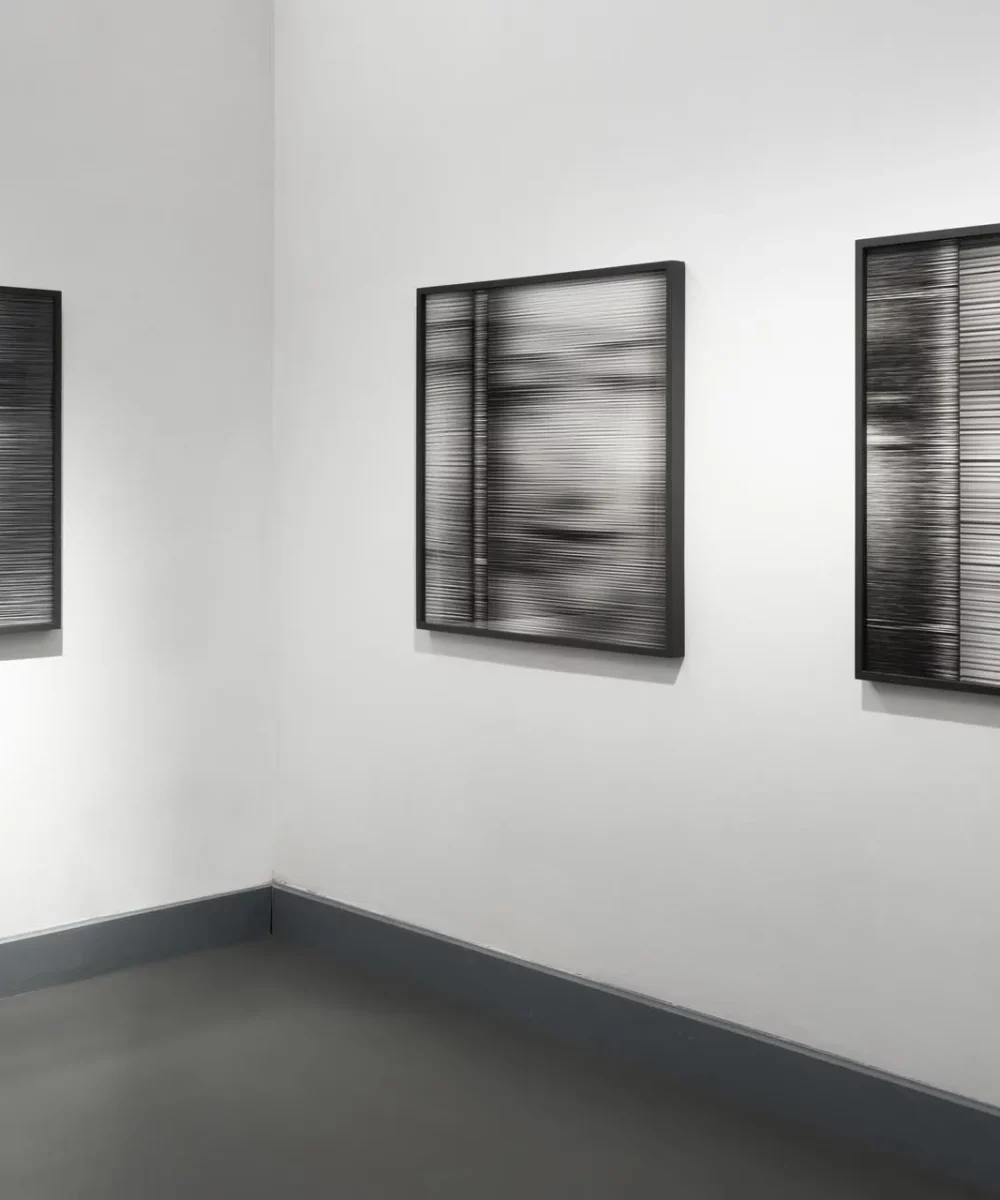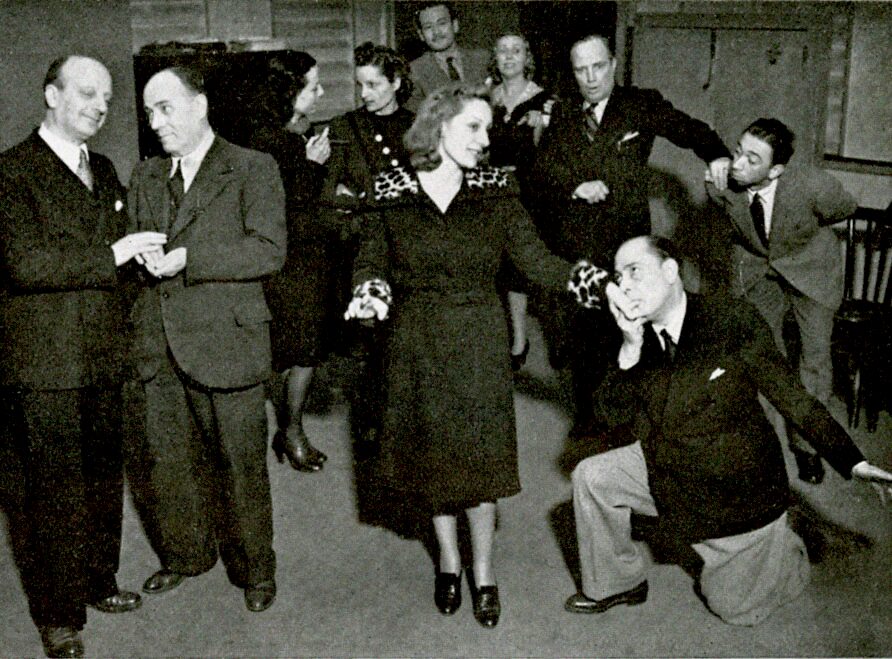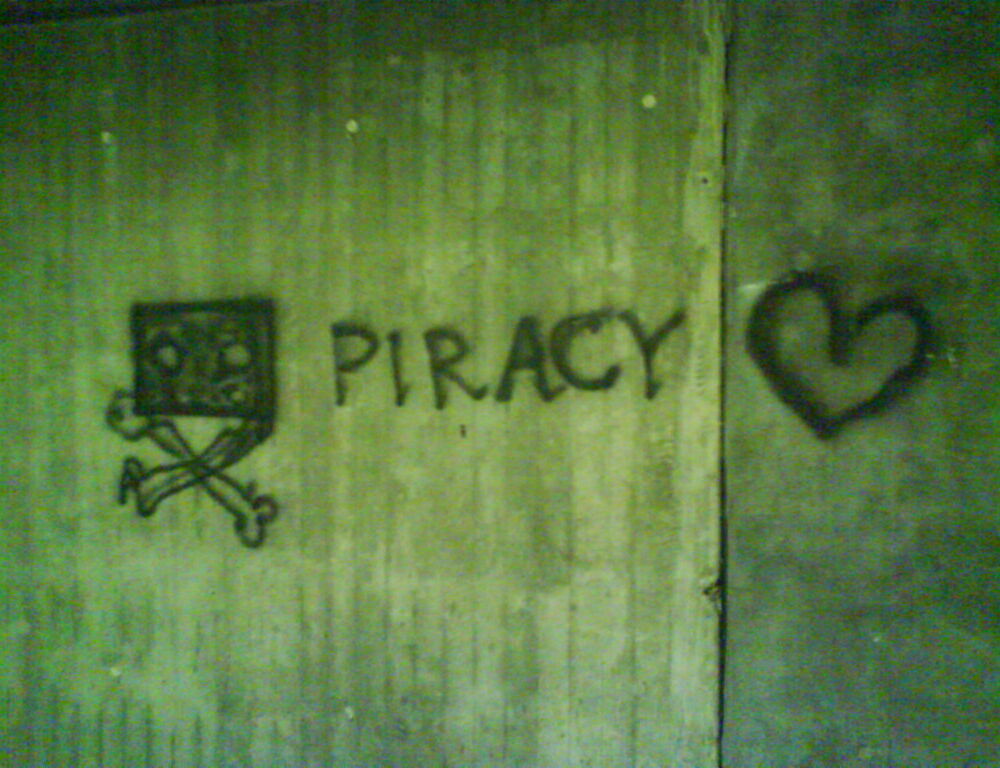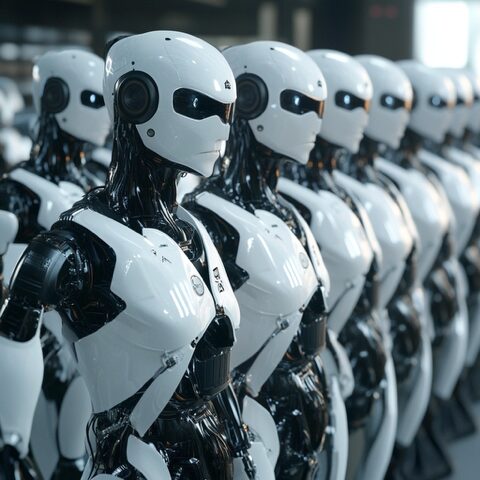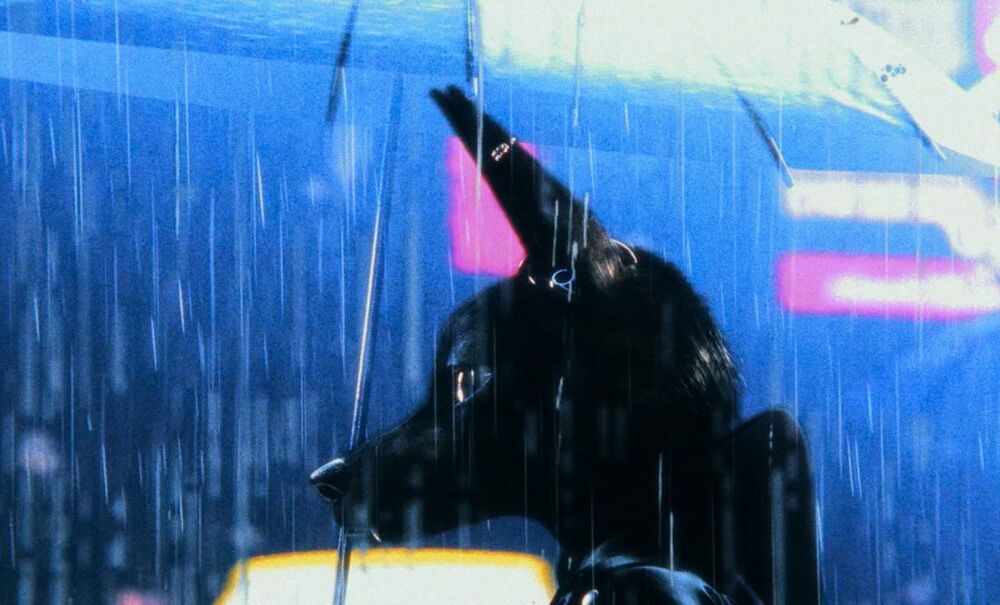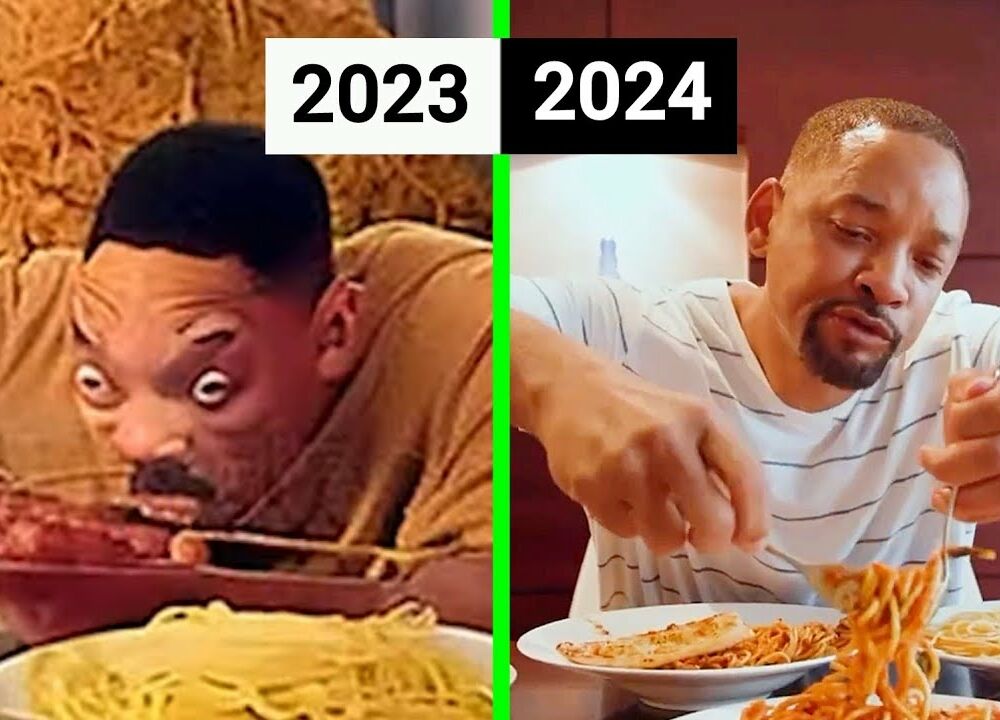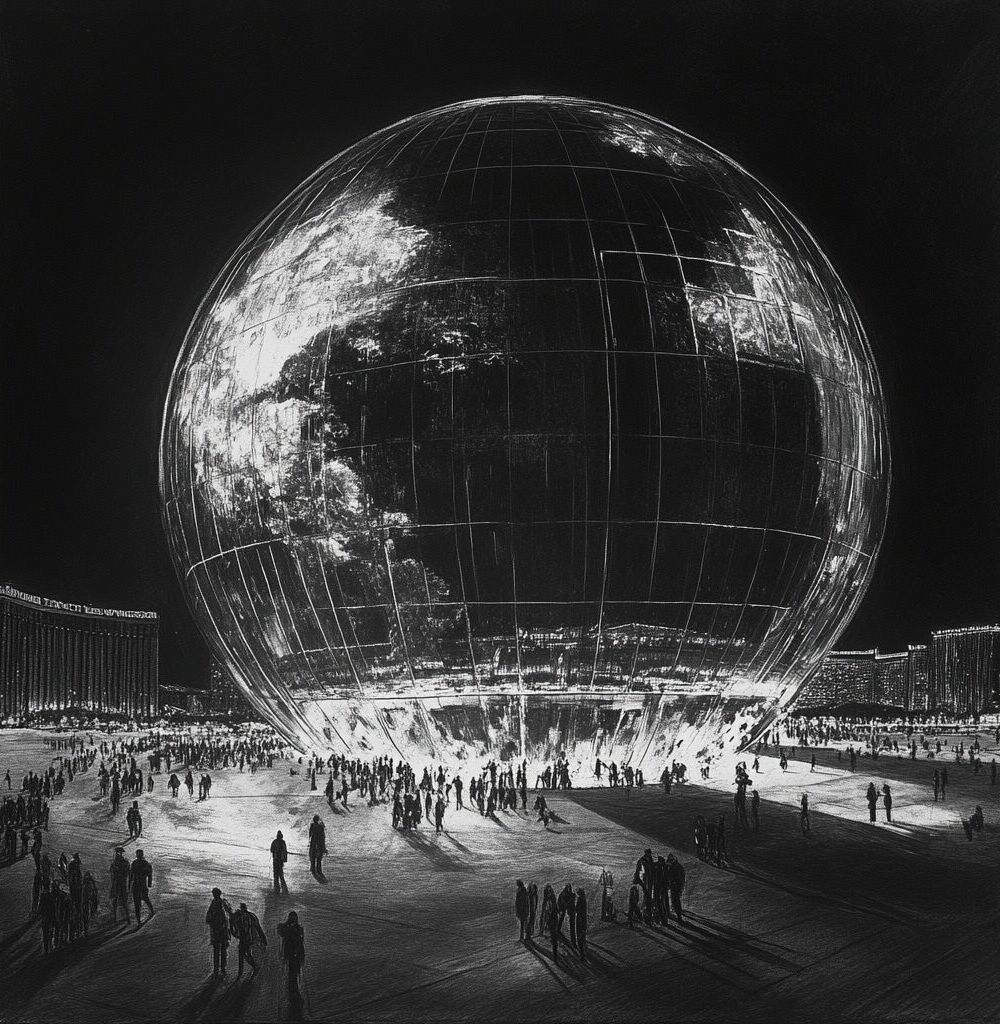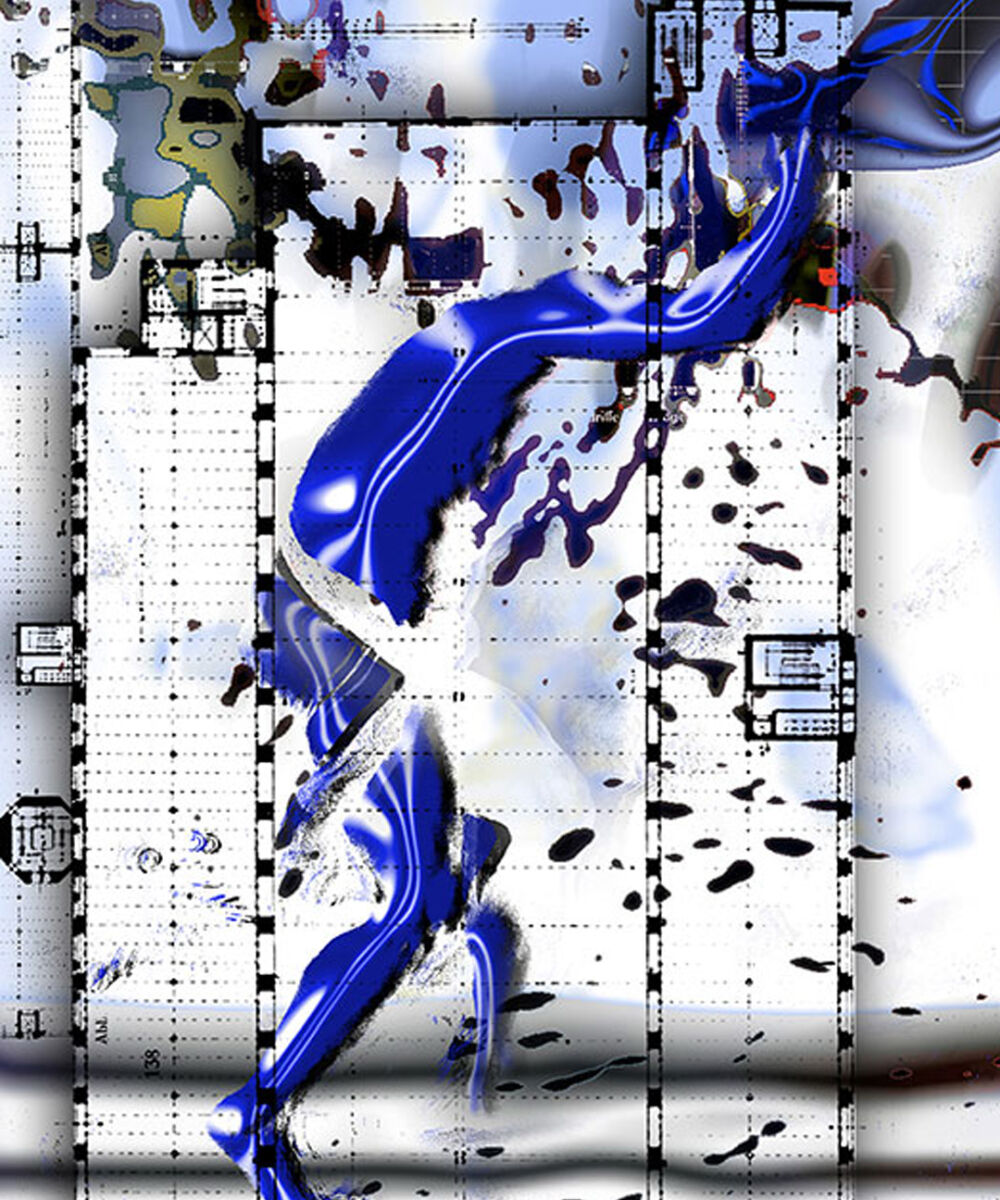NET ECOLOGY
Meme Characters and Ecological Crisis: Art (in the Era of Global Complexity) According to Clusterduck
di Laura Cocciolillo
We live in an era defined by complexity, where crises no longer emerge as isolated events but intertwine, amplify, and feed into one another, creating what the thinker Edgar Morin has termed “polycrisis.” This term is not merely a lens for observing the world but an interpretive key for understanding the global dynamics shaping our time. In contemporary art, polycrisis is not a distant concept but a restless undercurrent that shapes narratives, materials, and forms; it reflects a precarious system where climate change, geopolitical tensions, social inequalities, and technological revolutions intersect, generating a landscape rife with uncertainties (and possibilities).
Artists, acting as seismographs of the present, absorb these multiple vibrations and transform them into works that question our condition. Polycrisis, with its layered and elusive nature, thus becomes not only a theme but a methodology: a way of thinking and creating that invites us to explore complexity without reducing it, to discover unexpected connections, and to navigate chaos without succumbing to oversimplification. The collective Clusterduck addresses this concept through a language that combines digital art, memes, and collective reflection. Their approach is not merely aesthetic but aims to decipher the complexity of the present and build critical tools to interpret it. “Ecology is a theme we’ve often confronted because it’s inevitable if you’re someone who cares about the future and what we’re doing,” the collective explains to The Bunker.
Already with #MEMEPROPAGANDA, Clusterduck explored the communicative potential of memes, advancing a reflection that reached its peak in Memers For Future. Developed in 2020, the project focuses on the use of memes within climate justice movements such as Fridays For Future. “Memes were taken out of the digital world and used in the real world as posters at protests, only to return to the digital realm,” they explain, highlighting a dynamic that breaks the barriers between the two worlds. In this practice, the memetic language emerges as a natural code for Gen Z: “They didn’t think they were doing anything special. You just use something recognizable, with fast circulation, so you turn to memes.”
The collective observes with interest how, in recent years, memes have become increasingly structured tools in propaganda and awareness-raising efforts. “There are accounts that aim to create very targeted propaganda on ecological awareness. Some do it effectively, while others suffer from the classic problem of leftist memes: they’re very verbose, with walls of text.” In any case, Clusterduck sees memes as a fundamental resource for constructing collective narratives and addressing complex issues such as the climate crisis and the impact of digital technologies
The collective's works take the form of symbolic maps linking different crises and feelings.
Deep Fried Feel: Digital Emotions and Global Crises
With their most recent project, Deep Fried Feel, Clusterduck delves deeper into the theme of digital communication as a mirror of emotions and global conflicts. “It’s about how feelings get fried online,” they explain, evoking the process of data loss that characterizes digital communication. This fragmentation, manifested in the progressive loss of information through repeated sharing, becomes a powerful metaphor for the difficulty of conveying complex emotions in a technologically mediated context.
The collective’s works serve as symbolic maps linking various crises and feelings. “We found ourselves wanting to talk about seven crises but also seven emotions connected to these crises,” they say, referencing Adam Tooze’s concept of mapping the interconnections of global crises. Through detailed and symbol-rich imagery, Clusterduck seeks to represent the complexity of our time, providing interpretative keys that guide viewers through a decoding process. “People often need mapping, explanations. In the book to be published with Nero [Deep Fried Feels, 2024, ed.], there are collective reflections explaining the seven symbols or meme characters.”
Meme Characters: Archetypes of the Present
Meme characters play a central role in Clusterduck’s work, not only as expressions of a shared language but as emotional and totemic resources. “Meme characters are the internet community’s response to the need to add an emotional element to online dialogues,” they explain, emphasizing their value in overcoming the challenges of mediated communication. Born from the sedimentation of collective meanings, these characters represent a kind of digital collective unconscious, where emotions take shape through visual language.
A prime example is Pepe the Frog, an archetypal figure that Clusterduck refuses to confine to a symbol of hate. “Pepe is the trickster, a very ancient archetype that can be either positive or extremely negative.” For the collective, reclaiming these figures means asserting their positive potential, transforming them into tools of empathy. “If you abandon them to themselves, they become symbols of hate. We think it’s important to engage with these characters to foster the empathy necessary to address crises.”
This reflection ties into the fragility of digital knowledge: “There’s little awareness of how many web pages are lost each year, of how fragile this knowledge is.” Meme characters, in this sense, act as modern totems striving to preserve a collective identity in a context of progressive information loss.
Art and the Climate Crisis: A Shared Narrative
Ultimately, “the climate crisis, perhaps the greatest challenge we face, evokes feelings that are hard to process,” they admit, highlighting the difficulty of translating this complexity into visual language. For the collective, communication is key to tackling these challenges. “What still makes us collaborate as human beings? Definitely communication. So the connection was this: in a situation where ‘unmediated’ communication is made impossible, how do we return to a state where we can express ourselves, understand each other, and solve crises together?”
This question drives Clusterduck’s work, which aims to construct a shared narrative capable of uniting theoretical reflection with practical action. Through Deep Fried Feel and their previous projects, the collective demonstrates that art can be more than aesthetic representation: it is a space for connecting ideas, emotions, and collective actions. Their works, dense with references and layers, offer tools to navigate the complexity of our time, encouraging us to imagine shared solutions and build empathetic connections.
Laura Cocciolillo
È una storica dell’arte specializzata in arte e nuove tecnologie e in estetica dei nuovi media. Dal 2019 collabora con Artribune (di cui attualmente si occupa dei contenuti di nuovi media). Nel 2020 fonda Chiasmo Magazine, rivista indipendente e autofinanziata di Arte Contemporanea. Dal 2023 è web editor per Sky Arte, e dallo stesso anno si prende cura, per art-frame, della rubrica “New Media”, dedicata all’arte digitale.




